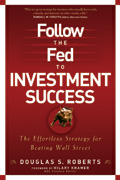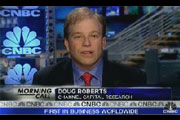Trust in Banks and the Congressional Pig Roast: FreePassers in the Beltway
Although my last several posts have focused on FreePassers in corporate America and on Wall Street, we also find an abundant number of them in government, especially in Washington, D.C.
Trust the Banks: One of the Greatest Lies in History
When the original TARP (Troubled Asset Relief Program) legislation was first introduced it had few restrictions and was expected to be a short-term measure to keep the banking system on life support and clear the toxic assets off their books.
Somewhere along the way this changed into recapitalizing, and the government made preferred equity investments in the banks. One can argue that this was a more effective way to deal with the problem and get banks lending again.
However, the previous Treasury Secretary specified virtually no conditions and decided to place his“trust in the banks.” What happened? As you may have noticed, the banks have not started lending again, though they have continued to pay bonuses. If any of these individuals at the Treasury department had made these investments privately, I am sure that the terms would have been quite different.
Pig Roast on Capitol Hill
An $800 billion stimulus bill has just passed the House of Representatives and is now on its way to the Senate. This bill has a huge cost associated with it but, in my opinion, may need to be increased substantially to deal with the global economic crisis affecting us.
One must remember that the purpose of this bill is to stimulate the economy, to create jobs, and to prevent additional jobs from being lost. There is always some negotiation and trading that occurs on Capitol Hill, with the resulting inefficiency that occurs with it. As such, this bill is loaded with pork and funding for special projects unrelated to economic stimulus. It is like a pig roast on Capitol Hill. Much of this bill has nothing to do with creating jobs and reducing unemployment. Although prevention of smoking and sexually transmitted diseases may be worthy causes, how do they stimulate the economy and create jobs? This is a perfect example of the Washington FreePasser mentality - politicians from both parties who know that the pork they are adding to the stimulus package will not help the broader economy, but also know that bringing these funds back to their constituents will help them get re-elected.
Where is the infrastructure spending? Senator Kent Conrad from North Dakota wanted it in the $200 billion range instead of only $30 billion reserved for highways and bridges.
There are clearly plenty of FreePassers in Washington, D.C. in both parties, but there are also those who do understand the gravity of the crisis that we are facing and understand their responsibility to the voters who pay their salaries. I pray that they can repair the damage being done by their FreePasser colleagues.
Many claim that there is no way to control the government and introduce accountability. They claim that it will always devolve into a bloated bureaucracy. However, there are methods which can be used to incentivize government officials. I will discuss this in an upcoming post.
Tags: banks, Economic Stimulus, pork, TARP, toxic assets, Washington






February 17th, 2010 at 12:07 pm
Please allow me to define a “good paying job” as $50,000 annual salary. If we divide the next stimulus tranche of $180 billion (assume the money is allocated to jobs rather than projects) by $50,000, the result is 3.6 million jobs for one year. If government continues to invest $180 billion per year on jobs for a 10 year period, solely to pay for W-2 income, the average unemployment rate is cut in half for a decade. (Please don’t hesitate to check my math here). If the aforementioned plan is enacted tomorrow on an annual reimbursement basis (job creation and W2 income must be proved before government reimbursement), the government would immediate stimulate healthy businesses to fill job shortages that they wouldn’t otherwise initiate by themselves, with no year 1 cash outlay to the government (reimbursement begins in year 2). Does this plan make sense to anybody? Does it also make sense to prioritize jobs over projects and reinvest the corresponding year 1 payroll tax revenue?